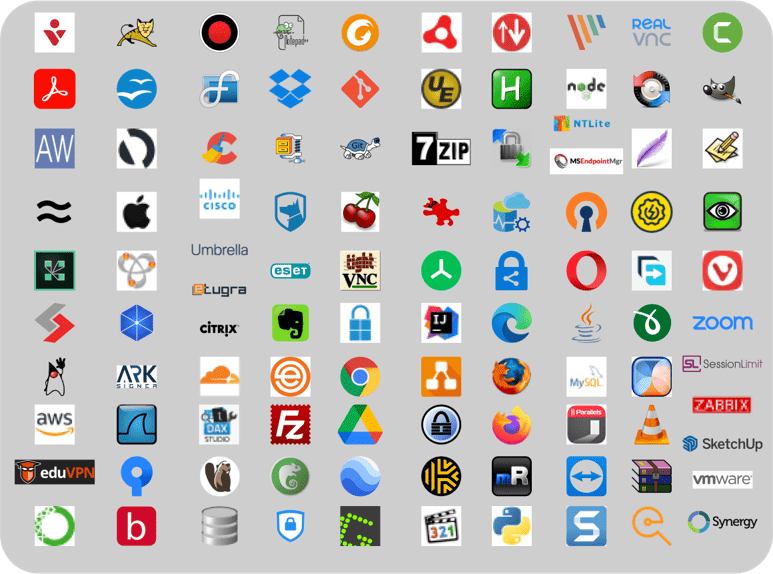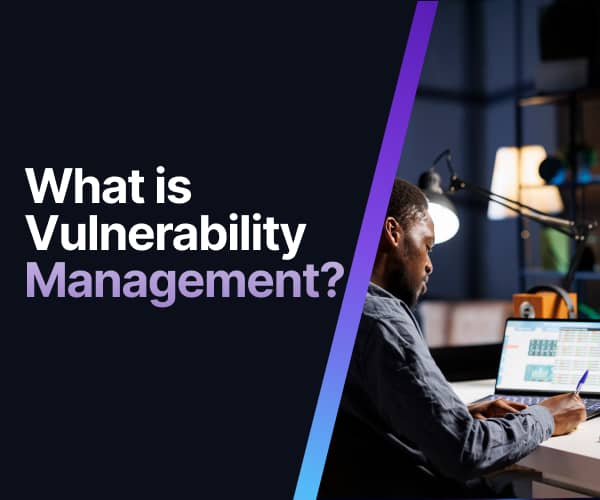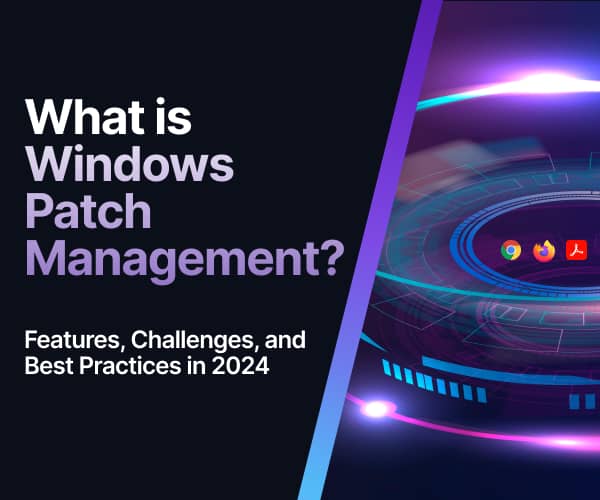What Exactly is Third-Party Patch Management?
Nowadays, our computers and mobile devices are becoming more functional and efficient by using third-party applications. However, like any software, these applications may face security vulnerabilities from time to time. These vulnerabilities carry the potential for cyber attackers to damage your personal data and devices. This blog, written by Easy2Patch experts, delves into the importance of third-party patch management in mitigating these risks and safeguarding your digital assets.
Understanding the Basics of Third-Party Patch Management
Operating systems have built-in update mechanisms, but third-party applications, including web browsers and productivity tools, lack a centralized update system. Understanding the basics of third-party applications is vital, as they are developed by entities other than the operating system manufacturer and are vulnerable to cyber attackers. Third-party patch management becomes essential to address this vulnerability challenge, streamlining and automating the update process for applications across the digital ecosystem.
What is Third-Party Patching?

The third-party software patch management concept includes incorporating updates for non-Windows applications. Organizations use these updates to update non-Windows applications. Easy2Patch simplifies this process by automatically managing application patches. In addition, you can keep your endpoint computers up-to-date with endpoint management tools.
Get started with our patch management software for free
Get 30 Day Premium TrialWhat are Third-Party Applications?
Third-party products are software developed by software companies/teams other than the operating system manufacturer. Google Chrome, Mozilla Firefox, Oracle Java, 7-zip, Winrar, etc. applications are examples of third-party software. On average, IT structures use approximately 50 to 100 third-party products, and larger IT structures use over a hundred. IT teams are responsible for the maintenance, security, and stable operation of these applications running on the operating system.
Productivity and Sustainability in Third-Party Patching
Exploring the nexus of 'Productivity and Sustainability in Third-Party Patching,' this topic underscores the significance of efficient software management. Highlighting the importance of updating software promptly for security and productivity, it also considers sustainability. Keeping software current improves operations and supports eco-friendly practices, cutting down on electronic waste by making software and hardware last longer. The ensuing explanations dissect this synergy, revealing how third-party patching strategically harmonizes productivity and sustainability goals.
Current SoftwareThird-party software updates ensure that systems operate securely and efficiently. Outdated or vulnerable software can lead to productivity losses and jeopardize sustainability goals.
SecurityThird-party patching is crucial for security. It helps prevent data breaches and business interruptions.
Data and Resource EfficiencyUp-to-date software operates more efficiently and reduces resource consumption.
Waste ReductionCurrent software can extend the software's lifespan and promote longer hardware use.
The Rising Importance of Third-Party Patch Management in Today's Cyber Landscape

Updating third-party applications is vital for closing vulnerabilities and improving performance. Developers provide protection against cyber threats by providing regular updates. The Deceleration in the number of vulnerabilities in third-party applications between 2010 and 2023 shows how critical these updates are. Updates during this period have kept users safer and improved the reliability of applications. For example, while Google Chrome had about 14,000 vulnerabilities in 2010, this number has now fallen by about 25 times. This drop in numbers proves that keeping your third-party apps updated is essential for security. So, make sure to regularly update all your apps to stay safe and have a better user experience.
The Consequences of Neglecting Third-Party Patch Management
Disregarding the crucial aspect of third-party patch management can inadvertently create an open invitation for such attacks. The susceptibility of software to exploitation escalates when it lingers in an outdated state, transforming it into a prime target for malicious actors who exploit well-documented security vulnerabilities. To mitigate these risks effectively, employing dedicated patch management tools, such as the innovative Easy2Patch, emerges as a proactive and indispensable strategy.
How to Stay Informed About Third-Party Software Risks

When you update third-party software, it's crucial to grasp the reasons behind the updates and the vulnerabilities they address. Just like every application has vulnerabilities, some of them get patched through updates. Spending time creating a catalog for these vulnerabilities, regardless of whether you're using WSUS or SCCM, might hinder an IT Team member's ability to stay informed and respond effectively. This lack of awareness can lead to oversight.
Monitoring every computer within the organization is essential and should be done with full awareness. Easy2Patch provides its users with an up-to-date catalog of application patches, easing the IT Team's burden of catalog preparation. Moreover, Easy2Patch includes explanations for the updates sent, enabling you to understand the vulnerabilities and take necessary actions promptly.
Best Practices for Effective Third-Party Patch Management
An effective third-party software update strategy includes maximizing update processes. We recommend streamlining the workflow by automating as much of the process as possible and entrusting the subsequent steps to the IT team. Easy2Patch facilitates this by providing automatic and regularly updated tools for deploying patches, thereby simplifying and enhancing the efficiency of the patch management process. Here, we'll delve into some best practices to optimize your approach further.
Testing and Deployment: Ensuring Smooth and Secure Patch Implementation
Addressing Complexities: Tackling the Challenges of Managing Third-Party Patching
The management of updates for third-party software can be intricate, particularly when each computer within an institution typically hosts a minimum of ten software applications. Ensuring that all these applications are consistently updated and monitored can be a daunting task, especially when dealing with multiple computers in an organization. Take, for instance, the widely used Google Chrome; its frequent updates in recent weeks illustrate the challenge of staying abreast of changes. When extrapolated to other applications, the complexity becomes overwhelming. Automation tools such as Easy2Patch offer a solution to navigate these challenges efficiently.
Automated Third-Party Patch Management and Benefits/Streamlining the Process: Leveraging Automation and Tools for Efficient Patch ManagementAutomated processes can expedite patching procedures and integrate with diverse update management tools, including SCCM and Intune. Notably, SCCM lacks a catalog for third-party patch management tools, resulting in a somewhat cumbersome monitoring and utilization process for these applications. This challenge becomes particularly pronounced in organizations with a considerable array of applications. Using automation tools like Easy2Patch is a wiser choice for enhancing security rather than relying solely on the IT team for this crucial task.
Reporting and Monitoring: Tracking Progress and Identifying Potential Issues
Security is contingent upon vigilant monitoring of the patch management process and meticulous tracking of progress. It is imperative to keep the software current and promptly address new versions. Easy2Patch streamlines your tracking and reporting procedures by furnishing an up-to-the-minute catalog for your convenience.
Conclusion
In essence, third-party patch management, as elucidated by Easy2Patch experts, is a crucial element in securing our digital ecosystems against evolving cyber threats. The blog underscores the significance of understanding third-party application vulnerabilities. It highlights how efficient software management is crucial for enhancing both security and sustainability. The consequences of neglecting patch management are stark—increased susceptibility to cyber-attacks. Easy2Patch emerges as a proactive solution, streamlining the complex process and offering automation tools for effective deployment. Best practices, including testing, addressing complexities, leveraging automation, and robust reporting, are pivotal for success. The correlation between timely updates and reduced vulnerabilities is evident, emphasizing the rising importance of third-party patching in today's dynamic cyber landscape. Easy2Patch stands as a beacon, empowering organizations to navigate this landscape confidently and ensuring the security, sustainability, and efficiency of their digital endeavors.
When Buying a Third-Party Patch Manager, What Key Questions Should You Ask?
- How does your company handle the identification and assessment of vulnerabilities in third-party software?
- Can you explain your process for testing and deploying patches to ensure minimum disruption to our systems?
- How do you prioritize which patches to install and when?
- Can you provide examples of third-party software that your patch management solution supports?
- How do you stay updated with the latest security vulnerabilities and patches for various third-party software?
- What measures do you have in place to ensure the security and integrity of our systems during the patching process?
- Can you provide details about your reporting and monitoring capabilities to track patching progress and identify any potential issues?
- How do you handle challenges like compatibility issues or conflicts between different patches?
- What level of support can we expect from your company in case of any issues or emergencies related to patch management?
Get started with our patch management software for free
Get 30 Day Premium TrialFrequently Asked Questions
IT Automation Key Benefits and Best Practices

What Is Vulnerability Management?

Ultimate IT Risk Management Guide 2024: Best Practices, Strategies, and Tools

Best Practices for IT Infrastructure Management in 2024

What is Windows Patch Management? Features, Challenges, and Best Practices in 2024

What are the Cybersecurity Risks Associated with Outdated Software and Operating Systems?





